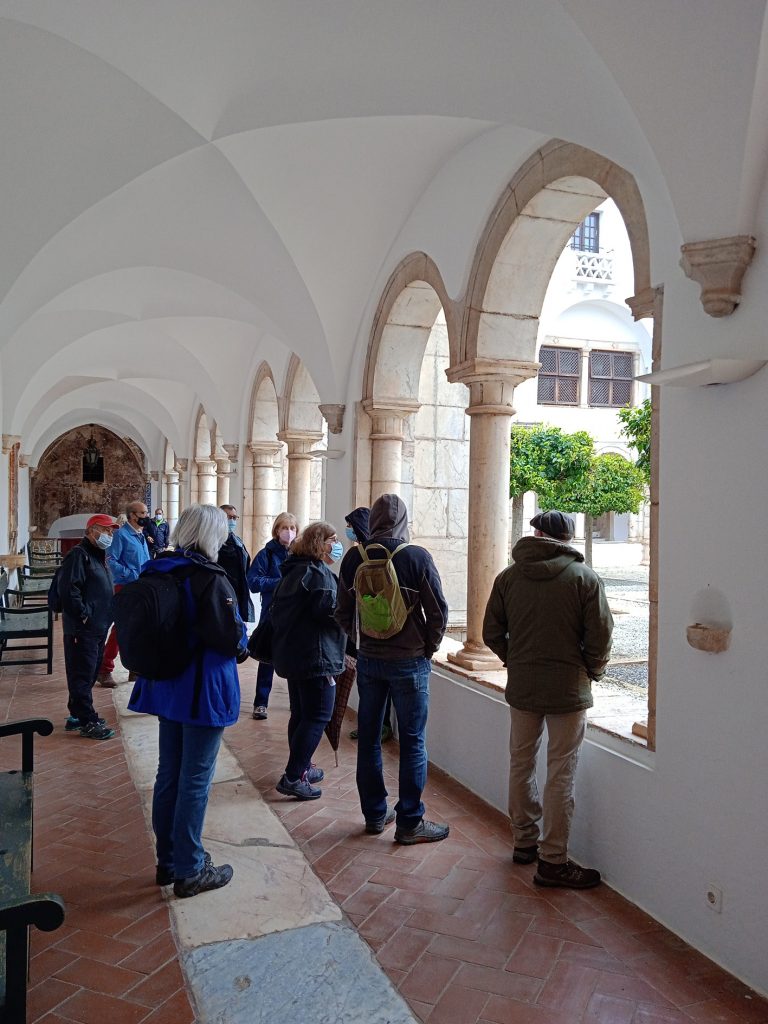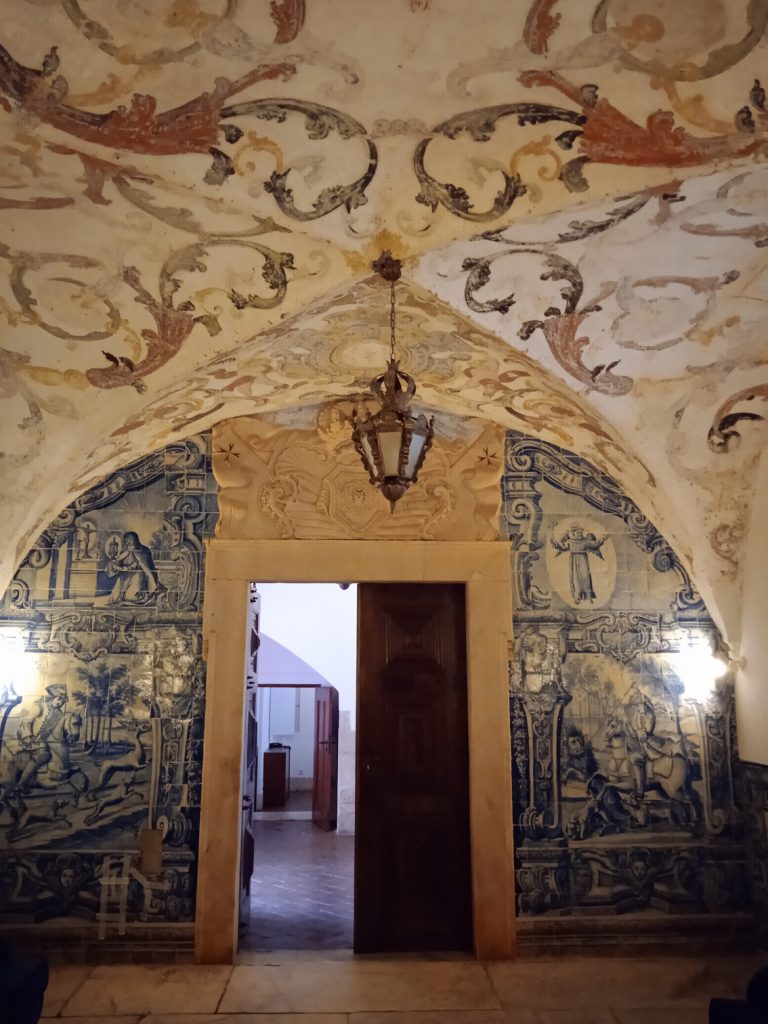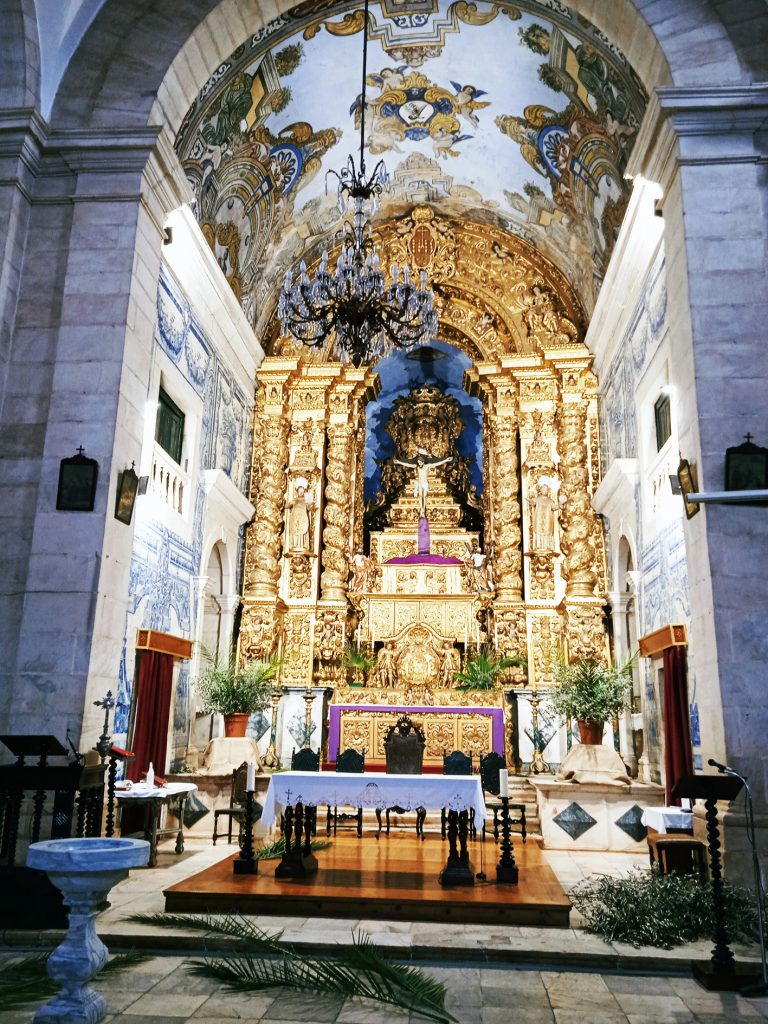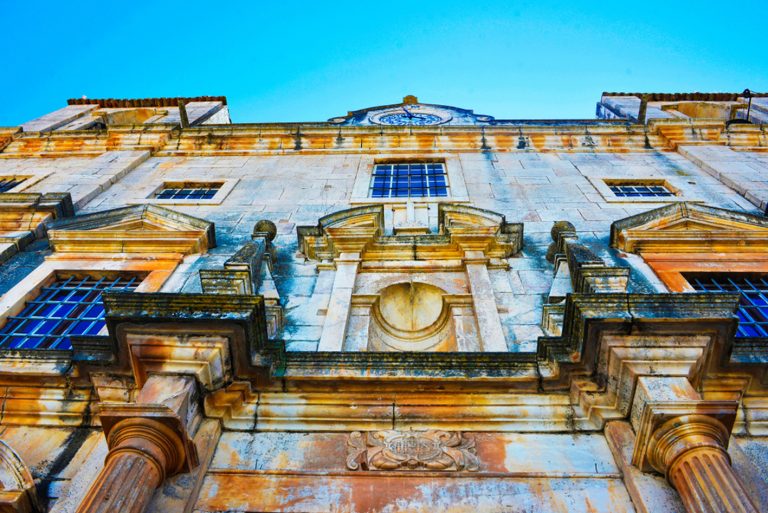In early April we were fortunate, as members of the Terras D’Ossa Association, to be invited to take part in a guided tour of Vila Viçosa. The theme of the walk was the use of marble in religious buildings in the town—churches, convents and other religious monuments. You may think this sounds like it could make for a boring morning, but far from it!
 Duques de Bragança
Duques de Bragança
We were guided by a team of professionals from the Portugal Marble Routes organisation (whose HQ is in the Cechap cultural centre close to the castle) and the first stop was the Agostinhos Church, founded as a convent in 1267 and repurposed as a Pantheon in 1501 by the Duques de Bragança, who pretty much put Vila Viçosa on the map. The powerful family who rose to become the ruling Kings of Portuguese, originally lived in the 13th century castle, before building the Paço Ducal (royal palace) and were buried in the church styled as an Italian pantheon.
 Kings of Portugal
Kings of Portugal
From there we moved on to the stunning Ducal Palace clad in white and grey decorative marble friezes with the imposing statue of King João IV out front on his horse. He was of course the father of Catherine of Braganza who was born in Vila Viçosa and went on to marry the impoverished King Charles II of England – and reportedly introduced afternoon tea drinking to England.
 Next stop was the cloisters of the Chagas de Cristo convent – today the 4-star pousada. Dating back to the 16th century, the nuns here, although part of a silent order, were mostly from rather well-off families and were allowed to create their own individual apartments within the convent, which today make up the rooms of the hotel.
Next stop was the cloisters of the Chagas de Cristo convent – today the 4-star pousada. Dating back to the 16th century, the nuns here, although part of a silent order, were mostly from rather well-off families and were allowed to create their own individual apartments within the convent, which today make up the rooms of the hotel.
Important dates in history
We then walked a rather sombre route to the old train station (no longer in use today), tracing the footsteps of the penultimate King of Portugal, D. Carlos I, who spent his last living day in Vila Viçosa. He left the royal summer palace to take the train to Lisbon on February 1st, 1908 and while crossing the streets of Lisbon in an open carriage he was assassinated along with his son, the 20-year-old heir to the throne, Luis Filipe.
 The visit took us to a few other interesting chapels and churches, all built by the immensely wealthy and pious Duques de Bragança, before we finished the tour in one of only two Jesuit churches in Portugal. São Bartolomeu is set at the top of the main square with an impressive view down to the castle. The Jesuits were great believers in education and the church is elaborately decorated in both marble and rich gold leaf.
The visit took us to a few other interesting chapels and churches, all built by the immensely wealthy and pious Duques de Bragança, before we finished the tour in one of only two Jesuit churches in Portugal. São Bartolomeu is set at the top of the main square with an impressive view down to the castle. The Jesuits were great believers in education and the church is elaborately decorated in both marble and rich gold leaf.
We finished the walk here and were really pleased that we’d had the opportunity to visit some of the more hidden gems of the town. We came away understanding a little more of Portugal’s fascinating history as well as the important role that the Alentejo played in it’s story.
For more tours organised by Portugal Marble Routes – see their website here.



